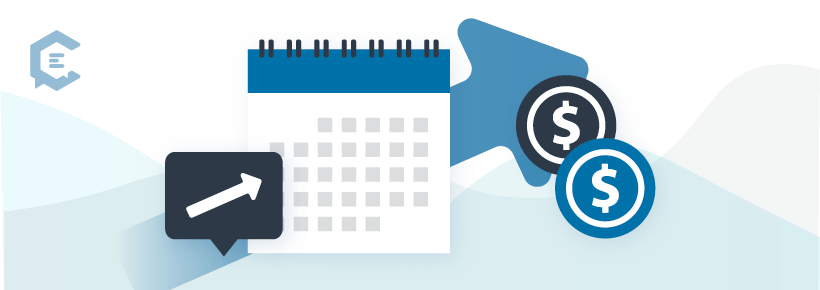My content creator, social media, and marketing colleagues are exhausted. It’s been a heck of a year, whether business slowed way down or got 10 times more intense. Paradoxically, the only constant seems to be uncertainty
As a response to this, my post, which was going to be about streamlining teamlance work in the age of COVID-19, has also taken a familiar pivot — one where we realized, halfway through trying to outline the post, that there is no such thing as streamlined workflow right now.
All the best practices for content flow (i.e. less back-and-forth, scheduling far in advance, going lower-touch on influencer campaigns) aren’t really working in this crazy year. The more you try to streamline, the more likely something will need to be corrected, backfire horrendously, or fail to launch.

8 tips for staying as consistent as possible with your content
Here are eight tips that can help you maintain your content marketing and keep some semblance of sanity while doing so. Note they are complete opposites of the advice you might have seen in productivity posts at the top of 2020… and we realize this and still fully stand behind this non-intuitive list of 2020 tips.
1. Don’t set go-live dates on a campaign till everyone has what they need in hand.
This particularly pertains to when people need a product to review/demo before sharing their opinion on it. Supply chain and shipping issues can cause multi-week delays, and if you’ve made promises to the brand that rely on certain deadlines being met, you may be in trouble.
Make sure everything is “subject to review/delay pending product delivery,” and don’t put dates into the contributor contracts or pub dates into your own calendar till the product is in people’s hands.
Steps:
- Reach out to contributors (Gauge interest without setting a date)
- Tell the brand manager you’re ready to activate
- Put contributors on standby
- Get the product and ship it out
- Set the campaign calendar
- Get contributors contracted
- Get the calendar approved by the brand manager or marketing manager
This is completely different from the process pre-pandemic when you’d put together a flighting plan and deliverables schedule for brand approval before ordering samples.
2. Make allowances for a few downweeks in your paid advertising flighting plans.
And expect that the down days will happen in multiple short stints, and you won’t have advanced knowledge of them. In one case, a campaign we ran over the summer had to stop running ads for six weeks on and off due to a pileup of national unrest, natural disasters, and pandemics.
Our small team watched the news cycle with beady eyes, evaluating and re-optimizing every three days. Big agencies reassessed every two weeks, making changes at the end of the month — and by the beginning of September, were hopelessly far behind the fast-moving ball of public sentiment, and unable to catch up on their annual goals.
3. Be prepared at any time to shift tactics and campaign spending.
You may want to reallocate funds to organic/owned creator content rather than paid advertising, or vice-versa, depending on what unexpected external factors come into play. Also, be flexible with switches over to different platforms, i.e., to Pinterest when the Facebook blackout happened… or, as many companies are going through right now, i.e., “We’re testing out TikTok, it’s the hottest platform for Gen Z. Oh, maybe we’re not, because it’s banned. But maybe we are because now it’s Oracle?”
4. Set up smaller check-in/touch-base meetings to supplement the ones with a larger team.
“More sub-committees, more meetings” was heretofore in everyone’s top gripe list of how to get bogged down and not actually execute anything, but in this socially distanced pandemic season, the larger the team, the more tasks and updates everyone is forced to review hastily before dispersing to their desk at home. Tiny teams are like clusters of folks in an office: if it were normal business, you’d be head-down working on this stuff together and then reporting back to the main team. Since you can’t, these little meetings are like virtual work sessions to get more granular and get things done.
5. Texting and DMs can be part of the client/agency or freelancer/agency communication process. Even off hours.
Unless you were very close colleagues, maybe even friends, texting and DMing at all hours used to be frowned upon. People who insisted on doing it were thought of as disrespectful of personal space and time. Now, though, with so many people juggling family and work, the lines between personal and professional time have blurred or disappeared — and people would often rather coordinate something through a quick text exchange rather than an email chain. If you’ve got three work projects on the go and are simultaneously looking after a toddler playdate and a home-schooling teen, it can be much easier to get work done on a smartphone than on a computer.
6. Don’t try to get your queue of social media content or semi-timely blog posts filled a few months out.
This used to be one of the ultimate hallmarks of content plan accomplishment and solid preparation. Being able to look three months into the future and know that all but your timely/news-bounce content was finished and queued up, ready to publish… ah, what a feeling. These days, the further out in the future you plan content, the more likely you’ll have to scrap some portion of it and revise with current events and sensibilities in mind. One odd and counterintuitive learning from the pandemic is that the quicker your turnaround, the safer you are, because the less of a risk you’ll have to rework or throw out part of it.
7. Stop automating the scheduling/publishing of any posts at all, whether blog or social media.
One very important byproduct of this fast-turnaround publishing schedule is that a lot of things tend to slip by fact-checkers and proofers. Google Deadline, Mike Pence, if you don’t know how bad the consequences of this could be. Whether you’re an editor pushing content out to an online publication or a content marketing manager in charge of a brand’s social media posts, don’t schedule anything to automatically post without a final edit. Things are just too chaotic right now. If you schedule a tweet or post for a week out, you have no idea what’ll happen in that week… and if you try to put something in the queue with a “hold publication till X” note, the person going through and publishing things at lightning speed might very well not see it. The fix is to switch, hopefully temporarily, from automated publishing systems to human oversight.
8. Be ready and open-minded to people going outside their swim lane when needed.
While publishers have always tended toward a business model where everyone on the editorial team wears whatever hat is necessary, brands tend to expect people to stay in their roles and perform only the things that are in their swim lane. And even publishers expect a separation between editorial teams and publishing/sales. All of those rules of conduct on content teams across every industry are completely blurred right now, because people need to find different ways of doing things than they’ve ever needed to before.
- Editorial professionals are gladly taking influencer gigs
- Magazines are playing with live streams where their departments turn into “shows”
- TV personalities are offering to set up product integration segments for a fee
- PR agencies have given up trying to secure no-fee-earned media
The old roles of “digital producer,” “lifestyle journalist,” “brand integration producer,” etcetera are morphing together in many cases, and if people can’t make enough money doing one of them, they’ll do more than one. [Lena] suggests leveraging this to everyone’s best interests instead of stopping to fret that a veteran lifestyle journalist is suddenly promoting Hard Seltzer on their personal Instagram.
Greater efficiency through not streamlining
A lot of these tips are counter-intuitive to how to streamline during normal days, but we are not in normal days, and we find that you really can’t take your eye off the ball for a second. It’s much less about automating and going low-touch, and more about staying hands-on and in the game, making small adjustments all the time. Make things easier with our publish-ready checklist.





